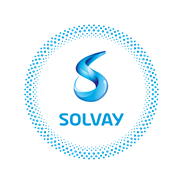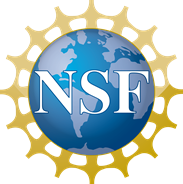
November 26 - December 1, 2023
Boston, Massachusetts
Symposium Supporters
2023 MRS Fall Meeting & Exhibit
Symposium EL05-Soft Optics
This symposium will broadly cover current and upcoming soft optical materials and devices. Soft optical materials are emerging as new platforms to modulate light, as photomechanical actuators, and as intrinsically stretchable alternatives to electronic sensors in soft robotics and other extreme-deformation environments. There are parallels to the recent growth of soft and stretchable electronics, but the materials set for soft optics is limited by low optical transmission (vs. fused silica), and processing methods for soft optical materials are in early development. The goal of this symposium is to gather together researchers across departments in academia, government, and industry to share the latest advances in soft optics and encourage rapid translation of emerging materials to applications. Potential session titles grouped around invited speakers include: structural optics of soft materials; soft photonics; stretchable optical waveguides for sensors and robotics; interplay between composition, processing, and optical properties of soft materials; bioinspired and conformal soft optics; and optical properties/characterization/actuation of liquid crystalline materials. A joint session is tentatively planned with SB04, Conducting and Functional Hydrogels, for papers on optical properties and applications of hydrogels. Another possible joint session is with SB05, Biohybrid and Soft Functional Interfaces. Symposium contributions should address fundamental connections between materials’ structure and optical properties, or explore new applications related to soft materials’ optical properties. Abstracts will be solicited in the following areas: Polymer materials and processing, soft robotics and wearables, photonics, single-mode polymer waveguide and polymer FBG sensors, 3D printing of soft optical materials, optical properties of liquid crystal elastomers, optogenetics with soft waveguides & other bio applications.
Topics will include:
- Optical properties of silicones, gels, thermoplastic elastomers, and other highly deformable materials.
- Simulations and experiments on relationship between structure and properties; methods for investigating the optical properties of soft materials
- Intrinsically soft light sources, light waveguides, and detectors; powering optical sources and detectors in soft materials
- Soft materials and structures whose optical properties respond to temperature, deformation, shear, and other signals from the environment
- Photonics on flexible and/or stretchable substrates, including new materials and conventional materials in new formats
- Deformable lenses and conformal optics
- Methods for integrating soft optics into sensors and other systems. Applications as sensors for soft robotics, wearables, and other soft systems
- Optically-driven soft actuators including liquid crystal elastomers; soft liquid crystal materials as light modulators
- 3D printing of optical systems including waveguides and lenses
- Optical properties of photopolymers
- Methods to manipulate the refractive index and optical transmission of soft waveguides, fibers, films and resins
Invited Speakers:
- Aránzazu del Campo (INM–Leibniz Institute for New Materials, Germany)
- Eric Fujiwara (Universidade Estadual de Campinas, Brazil)
- Xiaoting Jia (Virginia Tech, USA)
- Matthias Kolle (Massachusetts Institute of Technology, USA)
- Oleg Lavrentovich (Kent State University, USA)
- Lan Li (Westlake University, China)
- Danqing Liu (Eindhoven University of Technology, Netherlands)
- Yi Long (Nanyang Technological University, Singapore)
- Nanshu Lu (The University of Texas at Austin, USA)
- Mark MacLachlan (University of British Columbia, Canada)
- Jeroen Missinne (Ghent University, Belgium)
- Tse Nga Ng (University of California, San Diego, USA)
- Robert Shepherd (Cornell University, USA)
- Young Min Song (Gwangju Institute of Science and Technology, Republic of Korea)
- Fabien Sorin (École Polytechnique Fédérale de Lausanne, Switzerland)
- Jarrett Vella, Jr. (Air Force Research Laboratory, USA)
- Timothy J. White (University of Colorado Boulder, USA)
- Ming Xiao (Sichuan University, China)
- Shu Yang (University of Pennsylvania, USA)
- Lan Yin (Tsinghua University, China)
- Huichan Zhao (Tsinghua University, China)
Symposium Organizers
Cindy Harnett
University of Louisville
Electrical and Computer Engineering
USA
Michael Ford
Lawrence Livermore National Laboratory
Materials Science Division
USA
Juejun Hu
Massachusetts Institute of Technology
USA
Seungwoo Lee
Korea University
Department of Integrative Energy Engineering, KU-KIST
Republic of Korea
Topics
biomaterial
optical properties
polymer




-2.tmb-mtg_rel_ad.png?Culture=en&sfvrsn=a4240c09_1)

























